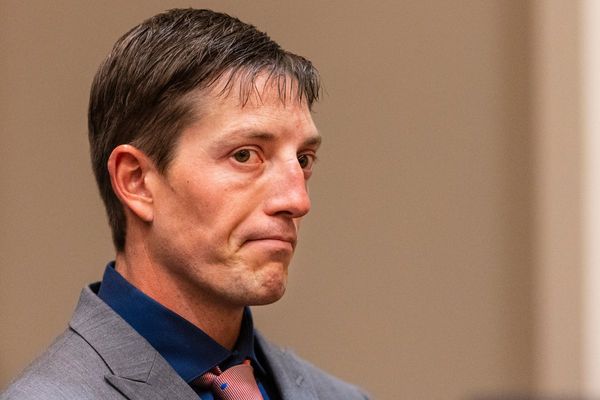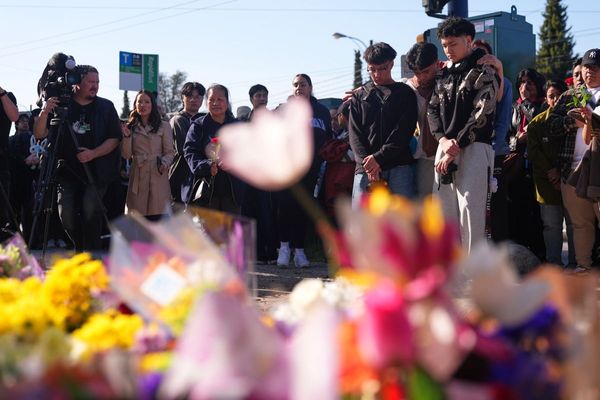
After at least 26 people were killed in a terrorist attack in Kashmir’s Baisaran Valley yesterday, newspapers this morning scrupulously pieced together what had happened through eyewitness and official accounts. The government hasn’t released the official death toll yet.
The Hindu’s Delhi edition had the headline “26 killed in J&K terrorist attack” on page 1. The report said a group of terrorists had “emerged from the dense forests around the trekking paradise of the Baisaran meadows in the upper reaches of Pahalgam”. The terrorists “took advantage of the non-motorable destination – popular among honeymooners, trekkers and adventure junkies – to target tourists and ensure that any help from authorities would take time to reach them, officials said”.

A second report on page 13, headlined “Blood flows on lush meadow as gunshots break afternoon calm”, pieced together an account of what happened from eyewitnesses.
“As gunshots rang out, there was panic and tourists ran for cover but there was no place to hide in the wide, open space, said a woman tourist.” Asavari Jagdale, whose father Santosh Jagdale was shot, said he was “asked to come out of his tent and recite an Islamic verse”. “When he couldn’t, he was shot thrice,” she told The Hindu, saying her uncle was then shot “several times in the back”. The newspaper didn’t confirm whether Asavari’s father and uncle were killed.
The Indian Express had multiple reports on page 1. It noted that a preliminary investigation had revealed the terrorists “opened fire with American-made M4 carbine assault rifles and AK-47s. Some 50-70 used cartridges had been recovered from the incident site until Tuesday evening”. The newspaper said the central government intends to hand over the investigation from the J&K police to the National Investigation Agency.

A second report on the front page said one of the survivors told an official that “three to four men in ‘uniform’ descended from the dense forests”. “They asked for our names. We thought they were policemen,” she said. “Suddenly, they opened fire on the men and left the women unharmed. They shot some of the men from point-blank range.”
The dead include a realtor from Karnataka, an accountant from Odisha, a Gulf-returnee from Kerala, and a businessman from Kanpur. The wife of one of the victims told security forces that when the firing began, they initially “thought it was an exercise being carried out by the armed forces”.
Page 13 compiled multiple accounts from eyewitnesses or family members of those killed. A relative of Shubham Dwivedi, who was killed by terrorists, said: “Shubham’s wife told us that the terrorists asked for his name and ordered him to recite the Kalma. When he couldn’t, they shot him. She pleaded with them to shoot her as well but they refused and told her to go back and inform the government about what they had done.”
Hindustan Times reported that at 2 pm yesterday, “four terrorists” emerged from the woods and “started firing indiscriminately at 500 tourists”. It quoted a woman from Karnataka, whose husband was killed, as saying: “They shot my husband...I told them kill me and my son too. The terrorist told me - I won’t. Go and tell Modi.”

The report quoted an “officer in central intelligence agencies” as saying the attack was carried out by “four LeT men, including three highly trained foreign terrorists from Pakistan and one local man, identified as Adil Thokkar, a resident of Bijbehara area”. Another intelligence officer alleged that The Resistance Front’s name “is used by LeT to divert the attention of the international community, but it is the trained terrorists of Lashkar only who target the civilians in Kashmir”.
Another ground report on page 8 said “waves of tourists” began departing Pahalgam soon after the attack “with hotels and resorts emptying out”. Their departure was complicated by the fact that the Srinagar-Jammu National Highway had been shut due to rains in Ramban district. The Kashmir Chamber of Commerce and Industry said the attack was a “direct hit on the tourism sector” and was “meant to scare people and tarnish Kashmir’s image of a safe and hospitable destination”.
The Delhi edition of The Times of India placed the death toll at “at least 28”, unlike most other newspapers that went with 26.
“Survivors said the terrorists, believed to be foreigners numbering around six and dressed in Army fatigues, identified their victims by faith, asking them to tell their names and recite Islamic verses before spraying bullets on them from close range,” the report on the front page said.

A detailed report on page 12 said the attack “came amid growing frustration in Islamabad over the failure of its efforts to portray terrorism as a ‘just struggle for self-determination’ and a homegrown affair, and was obviously aimed at getting the global spotlight on J&K”.
While Hindustan Times had reported “four terrorists” opening fire, TOI placed it at three. “Officers were looking looking into if the terrorists timed the attack to coincide with shooting practice by Army personnel in a nearby range so that shots fired by them did not engage immediate attention of security forces deployed in the area”. It said the terrorists seemed to have been “easy targets – almost ‘sitting ducks’”.
The newspaper reported that local residents held a “candlelight march” after Tuesday’s attack. It also quoted sources as saying the “Victor Force, a specialised Army unit, has been brought in to comb the forests around the attack site”.
In Kolkata, The Telegraph’s story on page 1 carried the headline “Mayhem in meadow”. It said the attack “has raised damning questions on security measures and shredded to bits the Modi government’s repeated assertions of normality”.
“The gruesome attack came as a grim reminder of how militants continue to ravage Jammu and Kashmir even after the scrapping of special status, while top leaders lived in denial and credited the ‘momentous development’ of August 2019 for paving the way to peace,” the report said. “...Tourists have rarely been targeted in Kashmir, which has given them confidence to visit the place.”

The Telegraph also had an editorial titled “Blood, again”. “New Delhi’s minders have responded to this tragedy with their usual thunderous rhetoric. The collective official bluster cannot conceal the failures of Modi’s jackboot Kashmir policy,” the strap said.
“The attention that the attack will garner, within and outside the nation, would make it difficult for Mr Modi’s spin doctors to unleash the normalcy narrative with the help of a pliant fourth estate,” it said. “...New Delhi needs to go back to the drawing board on Kashmir. But given the sullen circumstances, an immediate return to statehood and the resurrection of the powers of Kashmir’s elected government are unlikely.”
This is the first major selective targeting in Kashmir of tourists on a catastrophic scale. But what steps lie ahead for the government? Read this piece by Anuradha Bhasin.
In times of misinformation, you need news you can trust. Click here to subscribe to Newslaundry.
Newslaundry is a reader-supported, ad-free, independent news outlet based out of New Delhi. Support their journalism, here.







